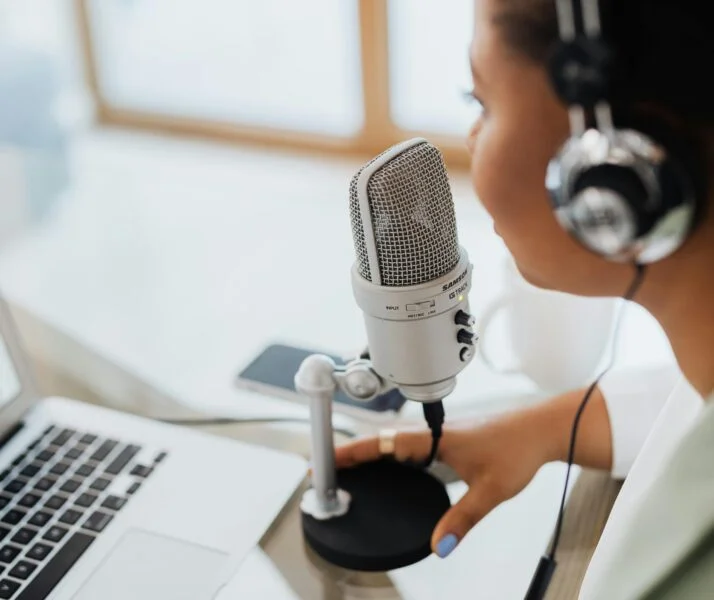From Ear to Wallet: Measuring the Incrementality of Podcast Advertising

We have all heard about the astounding growth currently being experienced by the podcast industry – more listeners, more time spent, and more ad dollars. With such incredible growth comes the need for additional accountability. At Ad Results Media, we take our responsibility as stewards of our client’s media dollars very seriously and have developed approaches, processes, and partnerships to deliver measurement solutions that can quantify the true incremental impact of the podcast campaigns we run.
Growth, Growth & More Growth
The growth of the podcasting category has been the driving force behind so much of the innovation in ad tech and measurement solutions.
Growth – Listeners
Currently, there are an estimated 130M monthly podcast listeners in 2023, and it is projected that this number will grow to 150M by 2027*.
Growth – Time Spent
In 2023, the average podcast listener spends about 28 minutes per day listening to podcasts, and podcast listening accounts for approximately 25% of all time spent with digital audio during the day. Both of these numbers are forecasted to continue to increase*.
When you look at heavy listeners of podcasts – those who tune in weekly – the time spent number climbs to 9 hours per week. An estimated 3 in 10 Americans are weekly listeners*.
Growth – Ad Spend
Where the ears are, so go the ad dollars. Total ad spend is estimated to be $2B in 2023, but projected to grow to $4.3B by 2024. An astounding 115% growth in just 2 years**.
Solid Benchmarks to Start With
For a long time, effectively measuring podcast advertising has been considered an industry challenge and one that we have all worked to improve upon together. Some of our key partners have conducted studies that establish useful benchmarks regarding who is converting from podcast ads and what the cost per various types of conversions are. When planning your campaigns, these benchmarks provide an excellent foundation.
While higher-income Millennials represent the largest group of people who have made a purchase as a result of hearing a podcast ad, there is actually really great penetration across all demos.
Additionally, our partners at Podsights conducted a benchmarking study on the average cost per conversion event on an advertiser’s website. These are excellent benchmarks to refer to as a baseline while you implement your own brand or campaign-specific incremental lift analysis.
US Podcast Ad Benchmarks, Q4 2022**
| Site Visitor Conversion Rate | 1.32% |
| Purchase Conversion Rate | 0.04% |
| Lead Conversion Rate | 13.03% |
| Install Conversion Rate | 0.16% |
| Number of Times A Household was Exposed to an Ad | 4.94 |
Now the Fun Stuff, Incremental Lift Analyses
Advertisers almost universally agree that there is a lot of excitement and optimism around advertising on podcasts due to the continued growth of the audience and these impressive benchmarks. However, now is the time to get serious about isolating the true business impact of advertising on podcasts for specific brands, products, audiences, and campaigns. With ad dollars projected to increase by 115% by next year, the Ad Results Media team has been working with a roster of key partners to help our clients answer the tough question – Did the consumer convert because of THIS campaign?
What is an Incremental Lift Analysis?
Incremental Lift is the % change in audience behavior that results in a purchase or conversion after being exposed to a specific campaign on a specific channel. The result is usually calculated as a % or rate of change. For example, we could show that consumers who were exposed to an ad were 30% more likely to make a purchase than those that didn’t. For our purposes, we focus on the conversions that took place on our advertiser’s websites after hearing a podcast ad.
One of the main reasons that an incremental lift analysis is such an important tool for marketers and media buyers, is that they need to know with certainty that these consumers weren’t going to buy the product regardless of whether they heard the ad or not. For example, almost everyone has teeth and uses toothpaste daily to keep ‘em clean. A toothpaste advertiser would like to know if the listeners bought their toothpaste because of the ad or if they were going to buy it anyway since it is a daily necessity.
Incremental Lift analyses do just that. They are able to calculate the incremental conversions that resulted from hearing an ad – not total conversions of the target audience.
How does it work?
This all sounds great, right? So let us break down how it all works.
While most measurement partners have slightly different methodologies, here is an overview of how the process generally works.
- Exposed and control groups are created. The exposed group is an advertiser’s target audience that hears the ad. Most of the time the control group is a look-a-like group that does not hear the ad but there are alternative methods emerging.
- Pixels are used on both the media platform as well as the advertiser’s website. These pixels are used to identify which users heard the ad and what subsequent actions were taken on the advertiser’s site.
- After your campaign runs, we are able to capture the total number of users who were both exposed and took action. But our work is not done. We now need to establish incrementality.
- We also capture the number of users in the control group that took action on the advertiser’s site but did not hear the ad. Remember our toothpaste example? These are the people who were going to buy that brand of toothpaste regardless.
- Now we take those two groups and calculate the real incremental impact of the ad. For example, let’s assume there are 50,000 users in each of the exposed and control groups. Within the exposed group, 5,000 people bought the advertiser’s brand of toothpaste and within the control group, 3,000 people bought the toothpaste. The exposed group generated 2,000 more sales.
- We calculate the incremental lift as 66%. 2,000 (incremental sales)/3,000 (expected sales) = 66%. The brand saw a 66% increase in sales as a result of running a podcast advertising campaign.
- Marketers can now take this rate of incremental lift and forecast future sales and calculate ROAS (return on ad spend).
Who are potential measurement partners?
Some of the leading partners that conduct Incremental Lift Analyses for podcast advertising are:
What does the future hold?
We are very bullish on the existing capabilities and applications for brands that use incremental lift analyses to measure the business results generated from their podcast advertising campaigns. However, we are even more excited about the future. As an industry leader, we are working tirelessly with our partners to advance these solutions even further. While the ability to measure incrementality using web-based actions is extraordinarily valuable for brands who transact primarily online, we know that offline actions and conversions should be the next set of metrics we tackle together.
According to Patty Mertes, VP of Media at Ad Results Media, “There have been incredible advances made to the suite of measurement solutions we can now offer our clients – specifically because of incremental lift studies. However, I see our industry matching the measurement prowess of digital and social media in the future with advances that could include measuring the incremental impact on retail sales and foot traffic.”
To learn more about using incremental lift studies to measure the impact of your podcast advertising campaigns, please reach out to the Ad Results Media team for a consultation.
Sources:
*eMarketer, March 2023
**IAB Podcast Advertising Revenue Study, 2022
***Podsights, “Benchmark Report Q1 2023,” Feb 20, 2023


